Haibike has always impressed me with their diverse range of high performance electric bike styles… They are a leader in the emountain bike space but also offer touring and road models now like the Urban S RX shown here. The first XDURO Urban model I saw and reviewed was a 2015 model that could only hit 20 mph vs. the 28 mph on this “speed” model and I felt like it was real missed opportunity. It’s hard to complain much because the frame still came in several sizes, the cool integrated lights were there and the Bosch mid-drive motor offered nearly all of the same benefits of balanced weight distribution, responsiveness and durability. But this is a road ebike with narrow efficient tires after all! It’s easy to hit and exceed 20 mph even on an unpowered road bike so why was this electric model “nerfed” I wondered? You could pay a bunch more for the 2015 XDURO Race, which was a Class 3 speed pedelec and featured cool drop bars, but for many people the price bump was likely difficult to justify… With the Haibike XDURO Urban S RX you pay ~$500 more than that first Urban model ($1,500 less than the Race) but you get speed pedelec performance, an 11 speed drivetrain and a nicer paint job (in my opinion) than that first bike. This is one of the coolest looking, lightest weight mid-drive electric bikes I’ve seen and with unique upgraded components like the vibration dampening seat post and shock absorbing stem it feels special and really purpose built.
Driving the bike is a 350 watt Bosch Centerdrive mounted at the bottom bracket. Haibike prints engineering specifications on many of their frames that talk about hydro-formed tubing and gravity casting interfaces. That’s the case with the motor plat here which securely attaches the Bosch motor and helps to blend it into the frame and support a custom geometry. The motor casing is plastic, painted black to blend in with some of the paint highlights and they’ve upgraded the sprocket to a narrow-wide 20 tooth design optimized for higher speed pedaling. The crank arms are 175 mm vs. 170 mm so you get more power transfer and a little bash guard chain guide plate has been added to keep your pants clear and snag free… for those random moments when you’d elect to wear pants vs. spandex on a road bike ;) The motor is very efficient but also powerful. As you switch gears it becomes more or less powerful trading torque for speed and is the same hardware offered with Haibike mountain models. You shouldn’t have any problem climbing with this thing as long as you switch gears appropriately. And that’s the other nice thing about the Bosch mid-drive, it offers software driven shift detection that reduces mashing and chain wear. For 2016 they also introduced a shift recommendation alert on the display that helps guide your shifting in order to maximize motor performance. The one downside to all of this is that the Bosch motor produces an electronic whine at higher RPM which can be seen in the video review above.
Powering the motor, backlit display and integrated headlight set is a 396 watt hour battery pack called the Bosch Powerpack 400. For 2017 an update pack is being offered with 500 watt hours and the Urban S RX interface is forward compatible. Expect 30 plus miles per charge with the standard pack but rest assured that replacement packs will be easy to find along with upgrades if you tend to ride further. The pack locks securely to the frame and can be charged there or removed for safe keeping and charging inside. At just 41 pounds this electric bike is light compared to the majority which weigh between 50 and 60 lbs. And when you take that battery pack off it reduces a further 5.3 lbs. With quick release wheels, that removable pack and a traditional diamond “high-step” frame, this is an easy bike to mount on most car, train and bus racks. Overall, I think they did an excellent job with the paint on the bike helping to blend the motor and battery in because they do stick out a bit. When compared to some of the Specialized or Stromer road ebikes the battery just isn’t as hidden.
Operating the bike is very efficient and almost fun once you learn the controls. Charge and mount the battery pack then press the lower left power button on the Intuvia display panel. This brings the bike to lift and allows you to read battery, speed, pedal assist and other stats. The display unit also has a reset for clearing trip distance, an i for swapping through max speed, average speed, odometer and range stats (which are especially cool because range is dynamically calculated based on the assist level you choose) and a light button. By pressing the light button you activate the front and rear LED lights that are AWESOME in my opinion. The headlight especially, which shines enough to actually light your path and not just alert others to your presence, looks beautiful and is aerodynamic, adjustable angle and turning as you steer. The rear light is positioned below the seat post on the seat tube shining just above the rear wheel and out to both sides. If you decide to mount a bottle cage to your saddle rails or a beam rack to the seat post the light will still keep you visible. Same goes for if you’re wearing a long coat that droops down below the saddle. The lights are awesome and don’t use much power… so keep them on if it’s getting dark. Near the left grip is a little control pad that duplicates the i button mentioned earlier and allows you to arrow up and down through four levels of assist with a satisfying click so you can learn to use it without even glancing down. My final bit of praise here is that the display is removable! Just like the battery, you can protect and store it separately when parking at racks in public spaces.
Even though I probably wouldn’t ride this bike daily for commuting and I wouldn’t want it to be my only electric bike because I love mountain biking and trail riding… I can’t help but want to buy this thing. It looks so cool and is so nimble and responsive, it just rocks! I’ve owned several non-electric road bikes over the years including a Specialized Tarmac Expert and one of my favorite experiences is that light weight super fast acceleration. While it’s not exactly the same feeling on this or most electric road bikes due to their weight, it is definitely close and even more enjoyable in its own way. Sure, I wish this thing had bottle cage bosses and yes the battery stands out a bit blowing your cover that it’s electric, indeed the motor produces a different sound that’s more audible here than on some of the mountain bikes with knobby tires but for what it is, this thing is a blast. Maybe you’ve got friends who get out road biking more than you’re able to and you struggle to keep up or always have to draft instead of leading. Maybe you’ve got an injury or live in a place where it’s super windy or hilly. I guarantee you’ll still get an excellent cardio workout with this bike and you can go way faster than 28 mph on descent so it comes back to empowering you to ride further or in ways that you enjoy. Not only is this a special build, the fact that it comes in so many sizes and from a reputable brand with a solid warranty and distribution in the US really helps to justify the price. It’s easy to spend way more than $5k on traditional road bikes so getting an industry leading drive system from Bosch here and the electronic extras makes it an exciting high value product to me.
Pros:
- Weighing in at just ~41 pounds this is one of the lighter electric bikes I’ve tested, especially for a mid-drive using the Bosch drive system
- I love that it’s setup with the Bosch Performance Speed motor to reach ~28 mph vs. just 20 mph with older Haibike XDURO Urban models… this is basically a road bike and the efficient wheels and tires are perfect for faster riding
- Cool integrated lights, not only are they securely attached to the frame and powered directly by the ebike battery but they are aerodynamic, side-visible and the headlight turns as you steer and can be angled up or down
- Unique stylized frame with internally routed cables and wires, available in five sizes for improved fit… I like how the seat stays are positioned a bit lower making room for the taller backlight
- Premium DT Swiss deep-dish wheelset with bladed aerodynamic spokes help you cut through the air at high speed, the fork is also an aero design
- Quick release wheels front and rear, removable battery and removable display panel make the bike easy to work on, transport or lockup more securely
- The drivetrain is geared for higher speed with a 20 tooth chainring (which spins at 2x) and the 11 speed cassette gives you a nice range of pedal speeds, it was designed to work well with the Bosch Performance Speed drive
- Given that this bike has eleven gears and gets assist up to 28 mph (45 km/h) I love that the drive system offers shift sensing
- Excellent weight distribution with both the motor and battery pack mounted low and centrally on the frame, this improves handling and makes lifting the bike more natural if you have to carry it up stairs
- With electric bikes, especially those meant for road riding at high speed, the cracks and bumps can really take a tole on your arms, back and neck so I love that this bike comes with a shock absorbing stem! Consider adding a 31.6 mm seat post suspension like this aftermarket for even smoother rides… I would definitely add this myself given the narrow low-resistant tires and rigid fork (even though they call it anti-shock)
- I love the integrated chain guard (keeps your pants clean and snag free as well as reducing drops) and the narrow-wide tooth pattern on the front sprocket, this will reduce the potential for chain slipping over bumps, nice Neoprene slap guard on the right chainstay as well
Cons:
- The Bosch drive system is efficient and very responsive but produces a more noticeable whirring sound (especially at high RPM operation) and with a road bike like this with smooth tires that noise is a bit more noticeable than on mountain bikes that have knobby tires
- I like how well integrated the brake lines, shifter cables and electronic wires are as well as how the motor becomes part of the frame (replacing the bottom bracket) but the battery pack stick out a bit, it isn’t as hidden and might “give away” that you’re on an ebike compared to some other models like the Specialized Turbo and Vado or Stromer ST1 and ST2 where the battery is inside the downtube
- I really feel like they could have fit bottle cage bosses on the seat tube… there seems like a lot of space and this would have been very handy for bringing along a lock, mini-pump or fluids in a water bottle, consider a saddle rail adapter for carrying two bottles like this
- Given that this is an electric road bike and you might be able to ride further, it’s too bad there aren’t bosses for adding a rear rack for carrying a trunk bag or panniers, the seat stays are untraditional so it might not work anyway (and would probably block the light), you could use a beam rack if you really needed the ability to carry stuff
- Because this bike uses such narrow tires it’s important to make sure you’ve got them inflated between the recommended 65-110 PSI avoid pinch flats, this is especially relevant given that the heavier weight of the bike compared to unpowered road bicycles
Resources:
- Official Site: http://www.haibikeusa.com/
- More Pictures: https://goo.gl/photos/5yFSV9tVqFkAtEnZ9

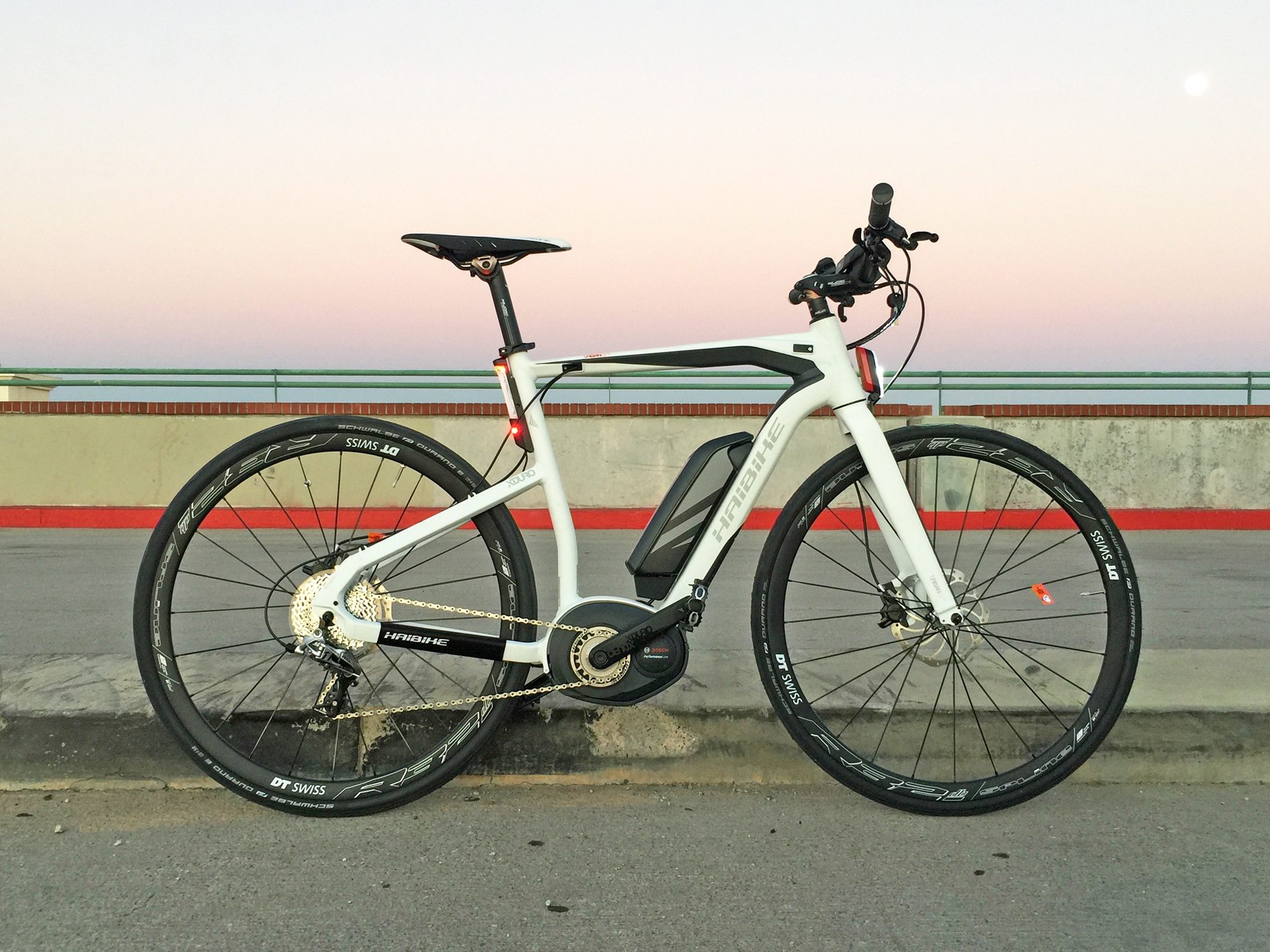

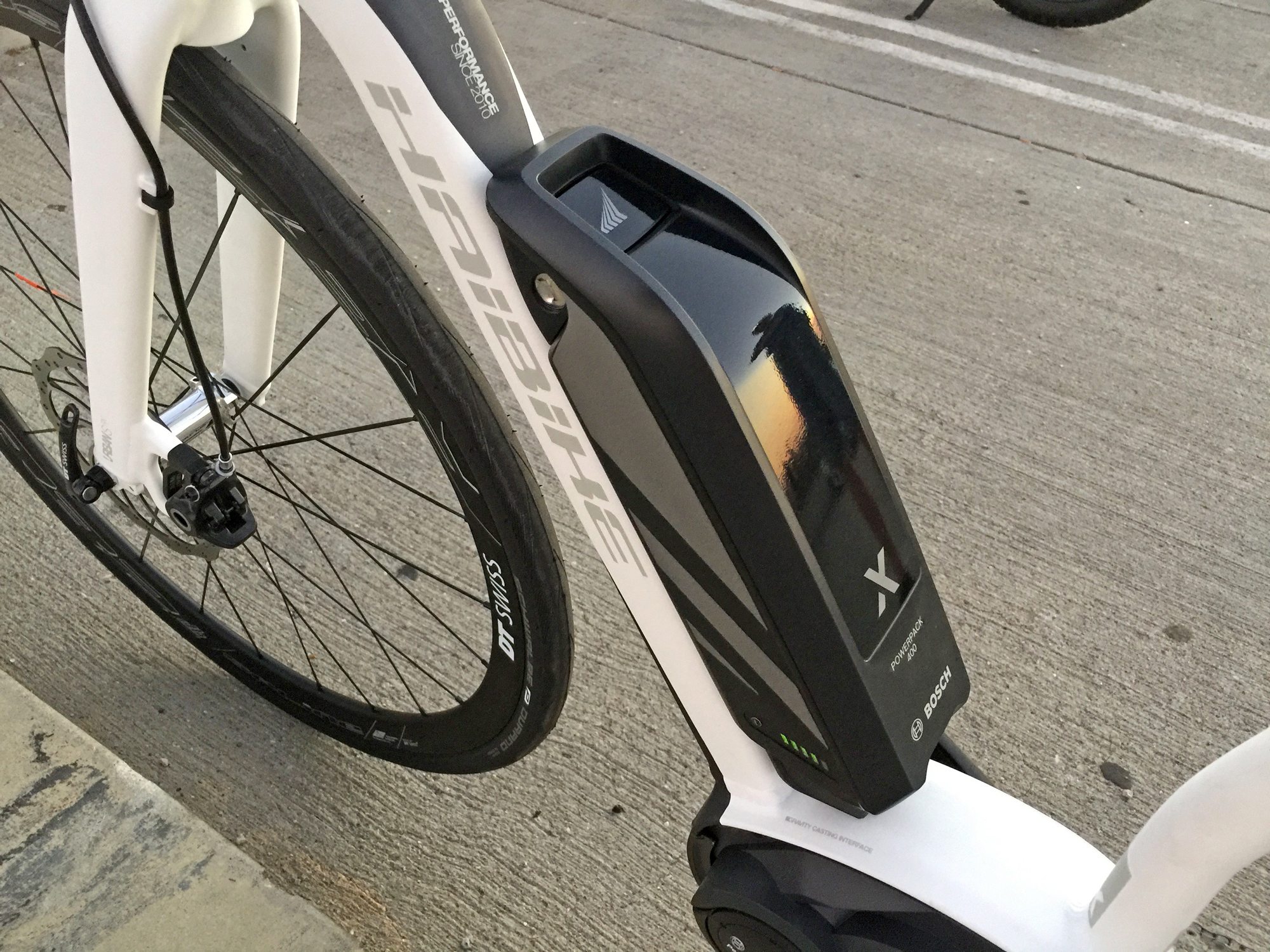

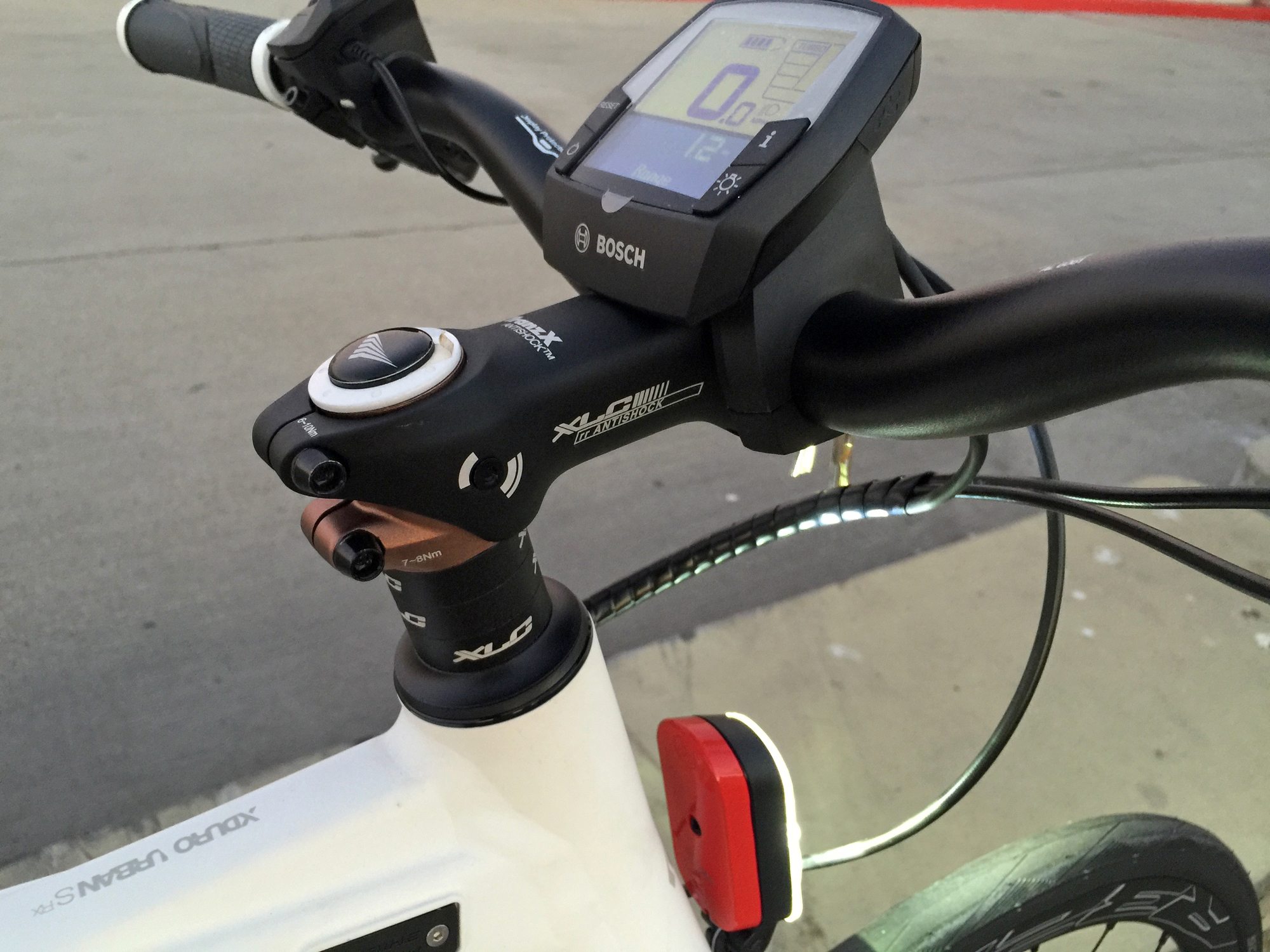
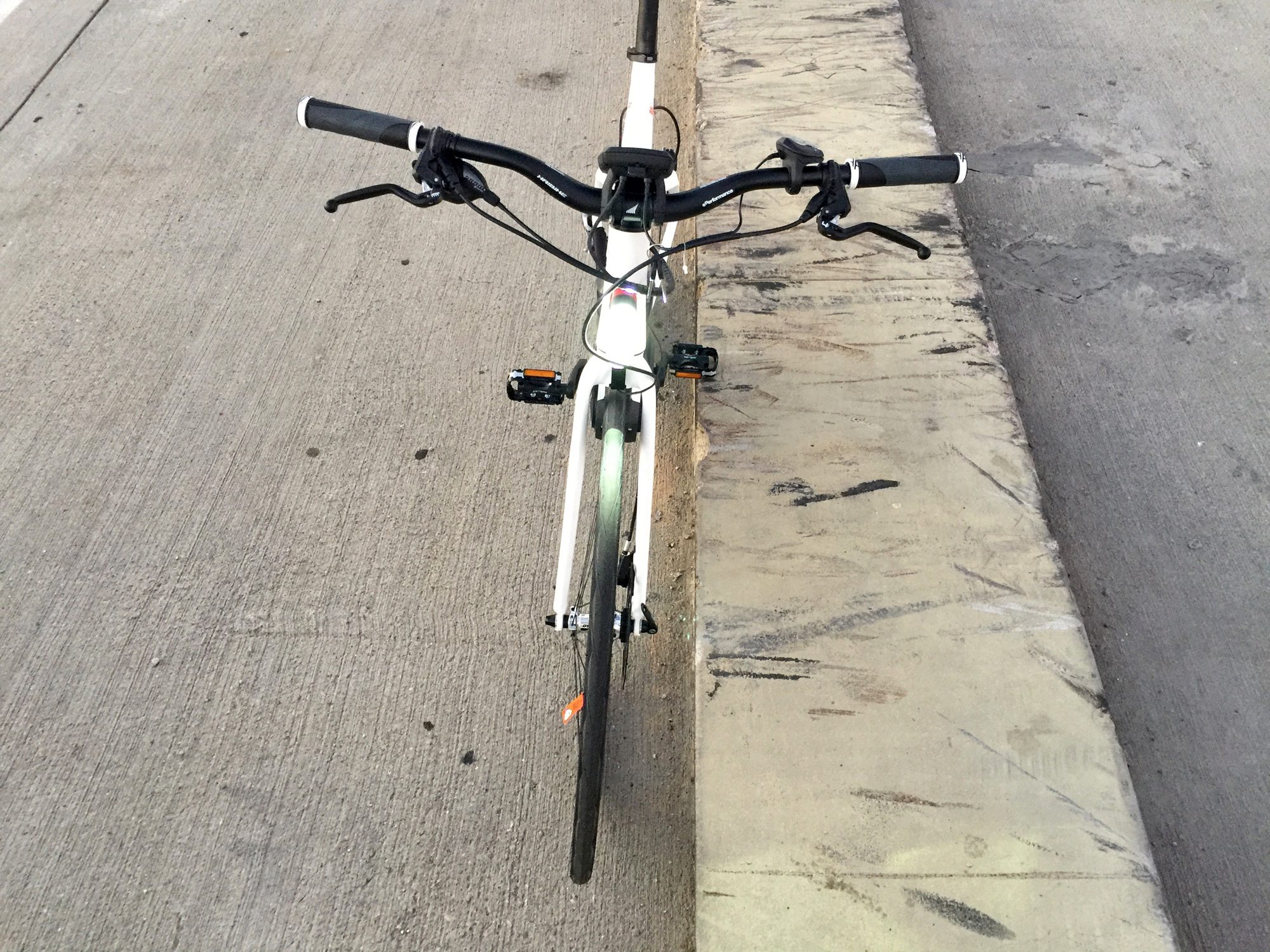
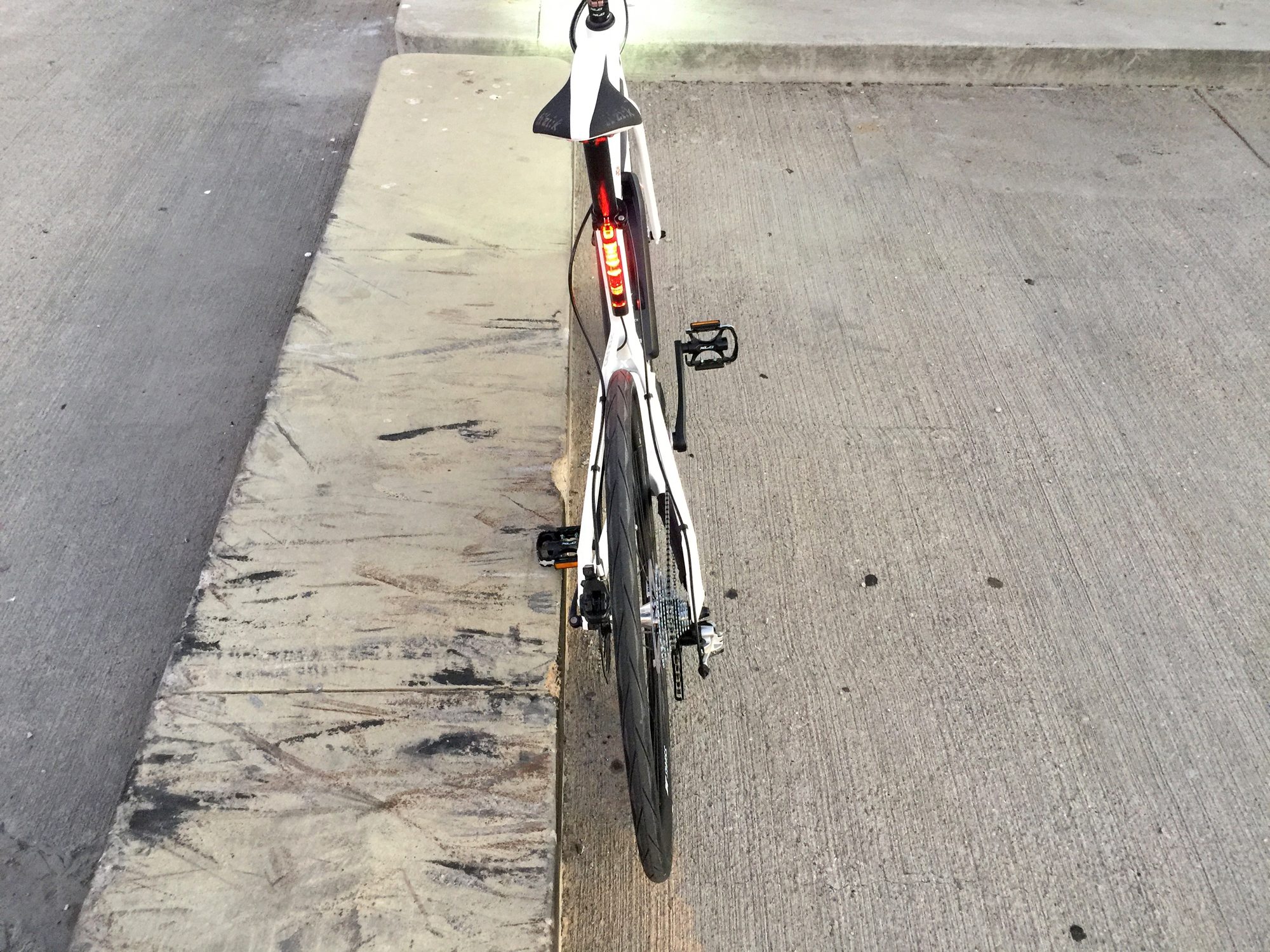
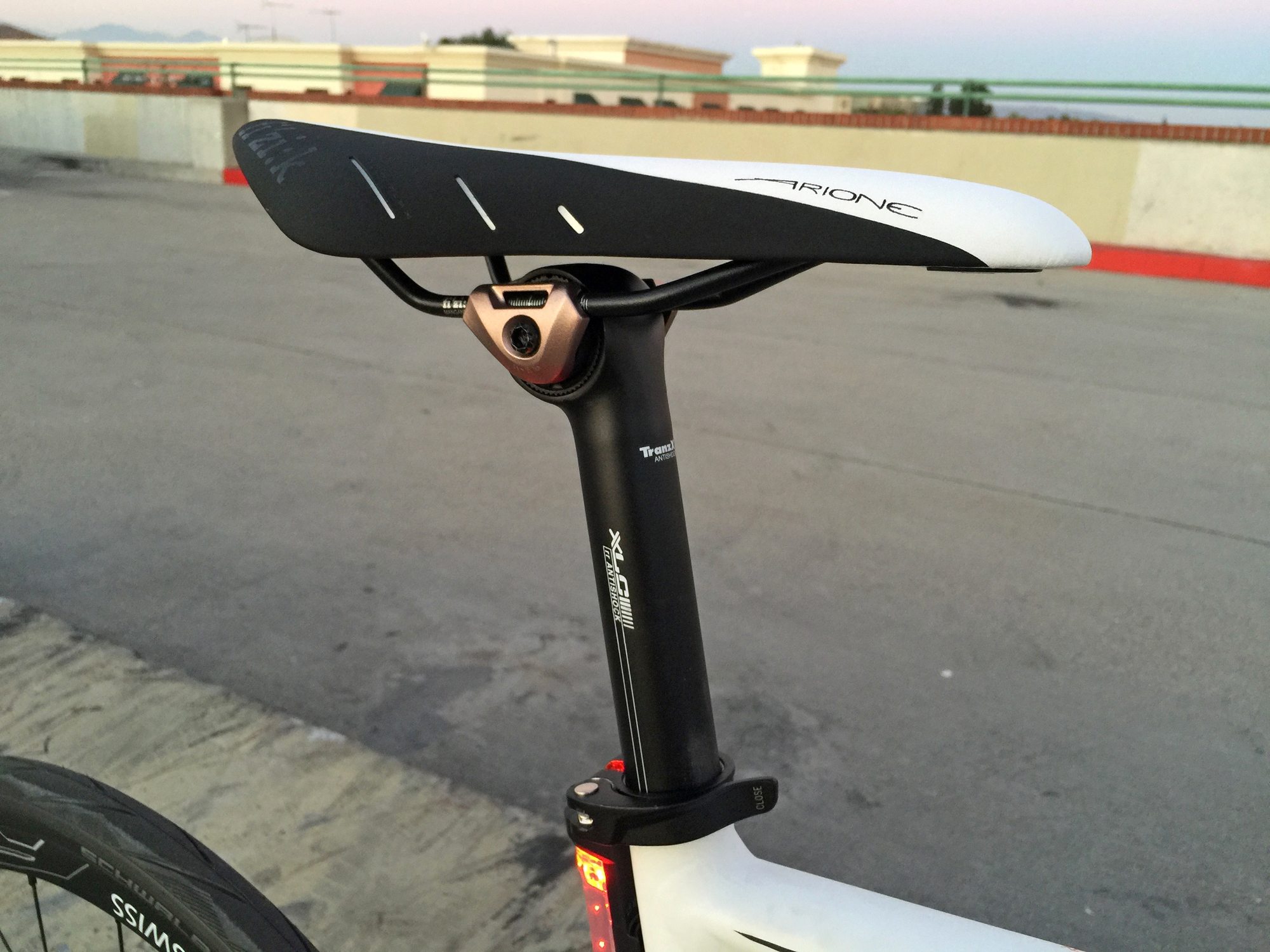

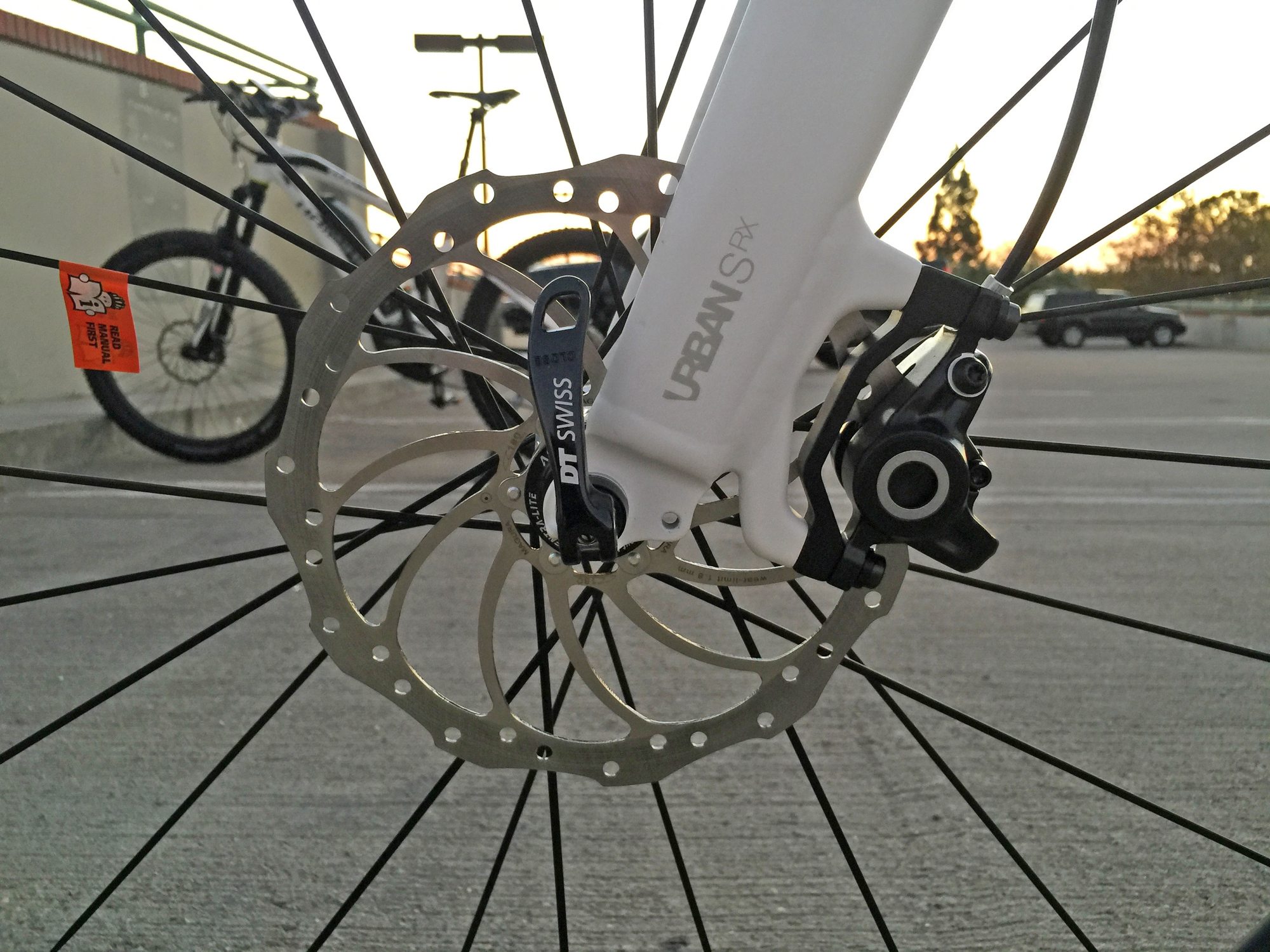

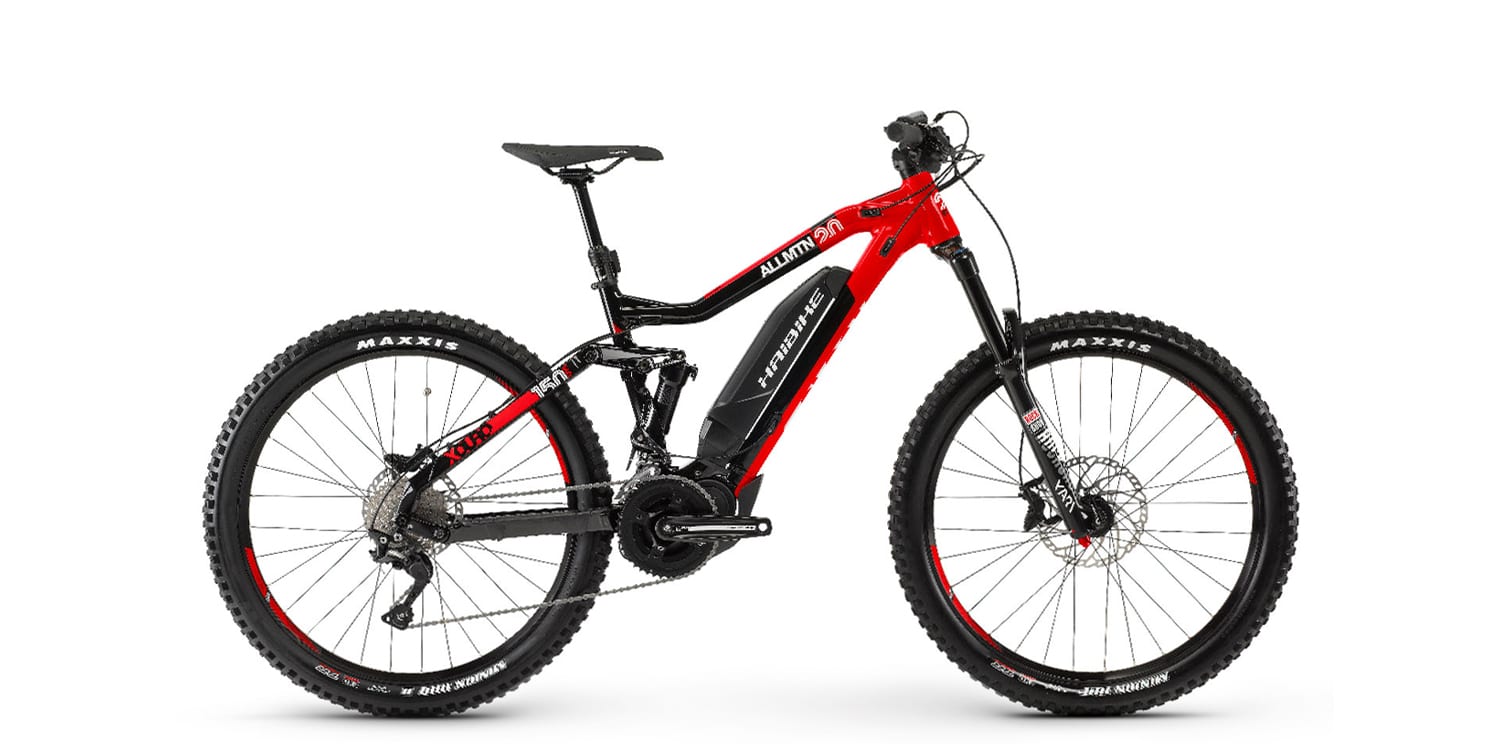
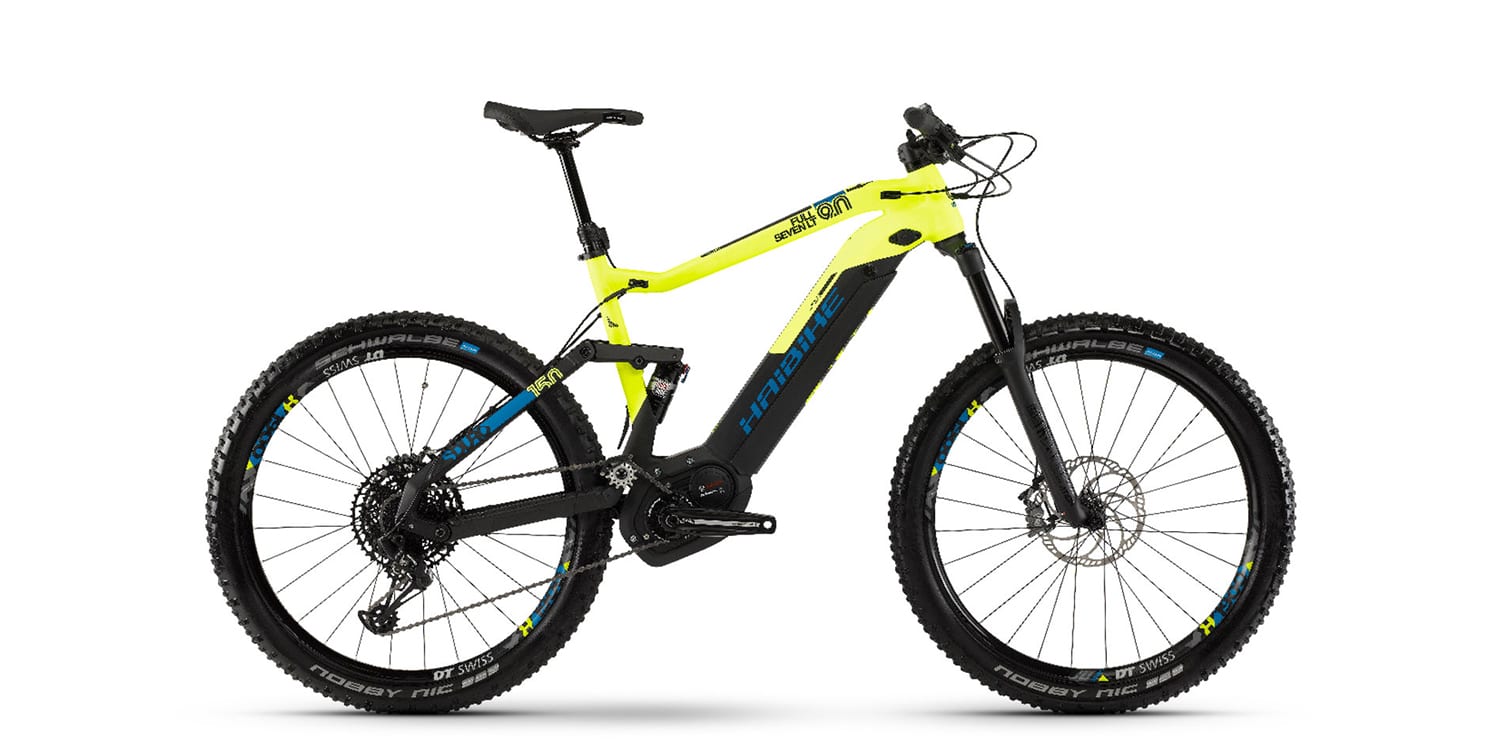
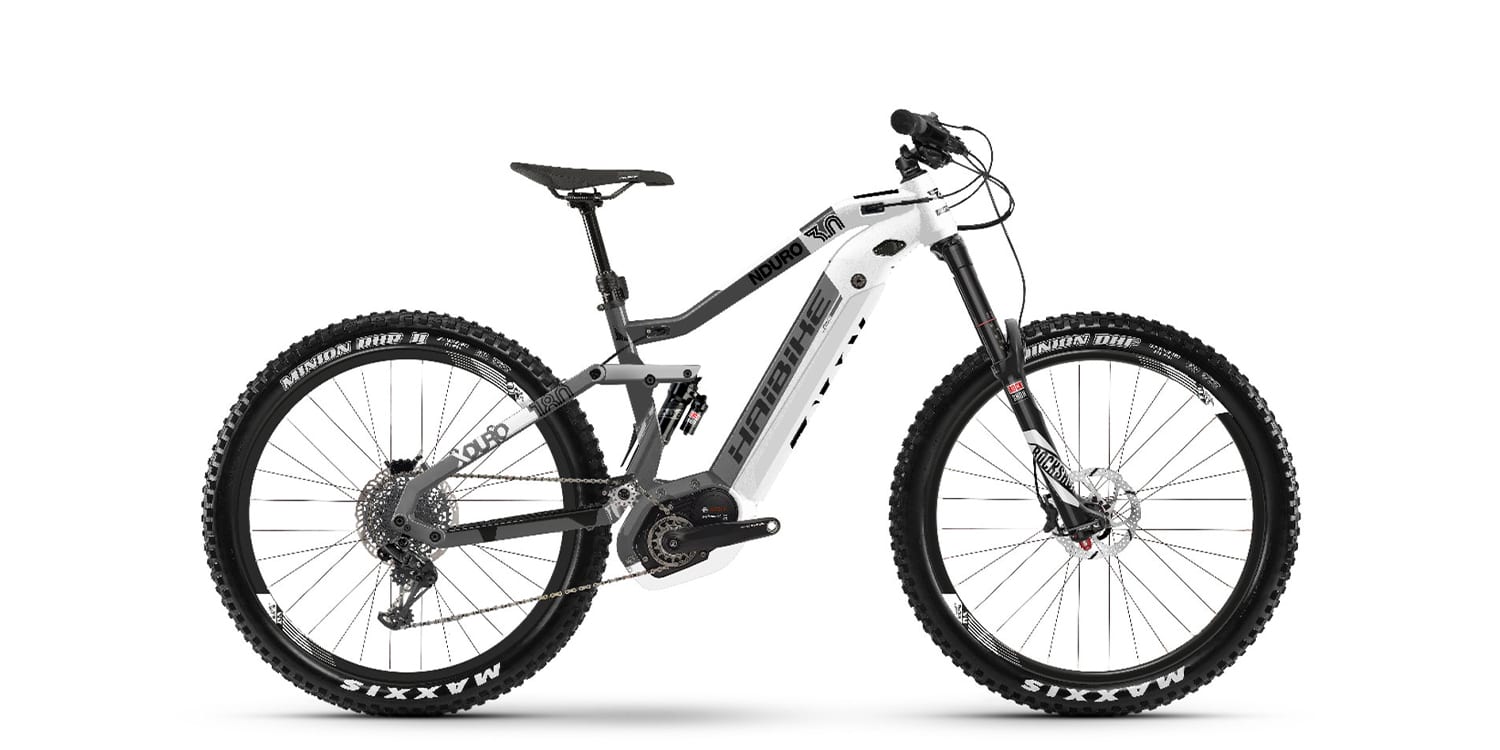
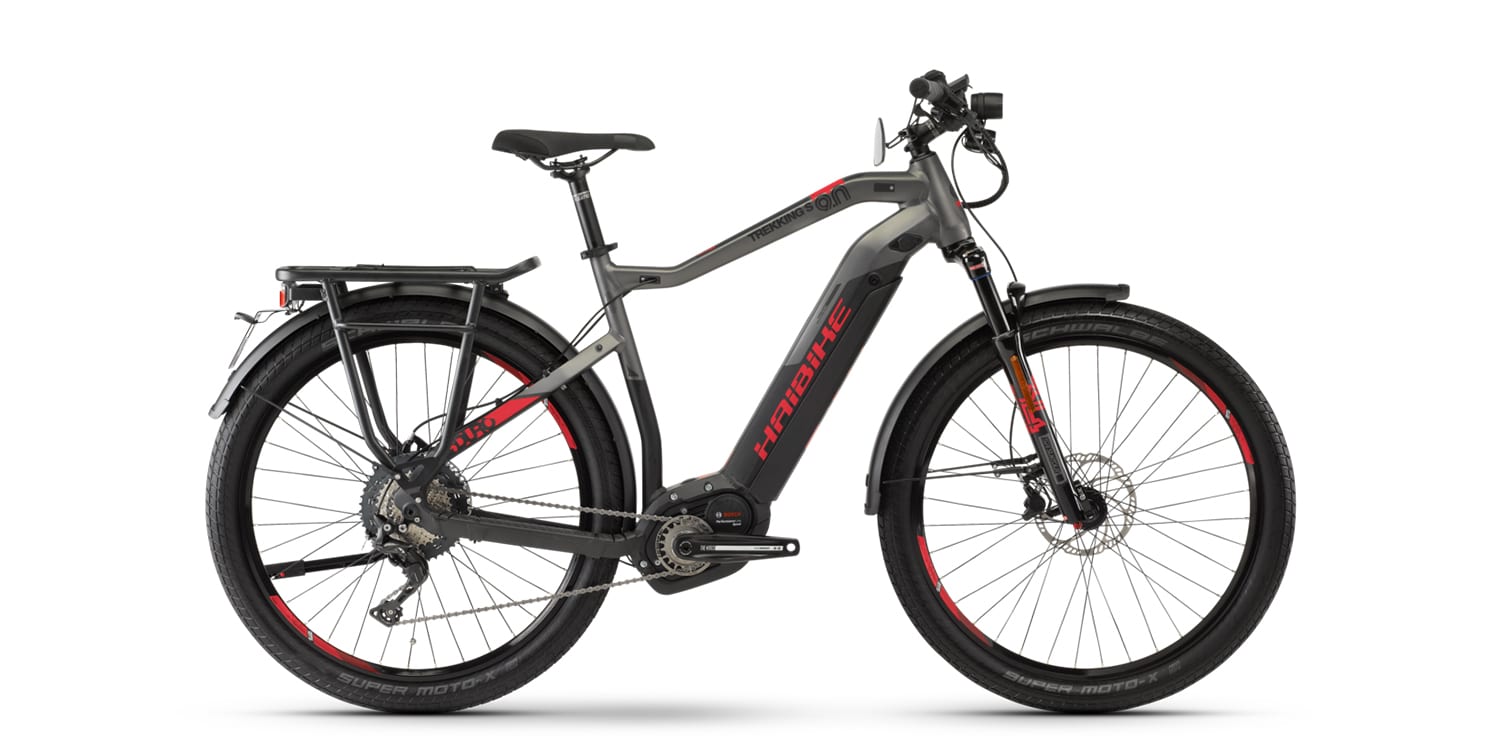
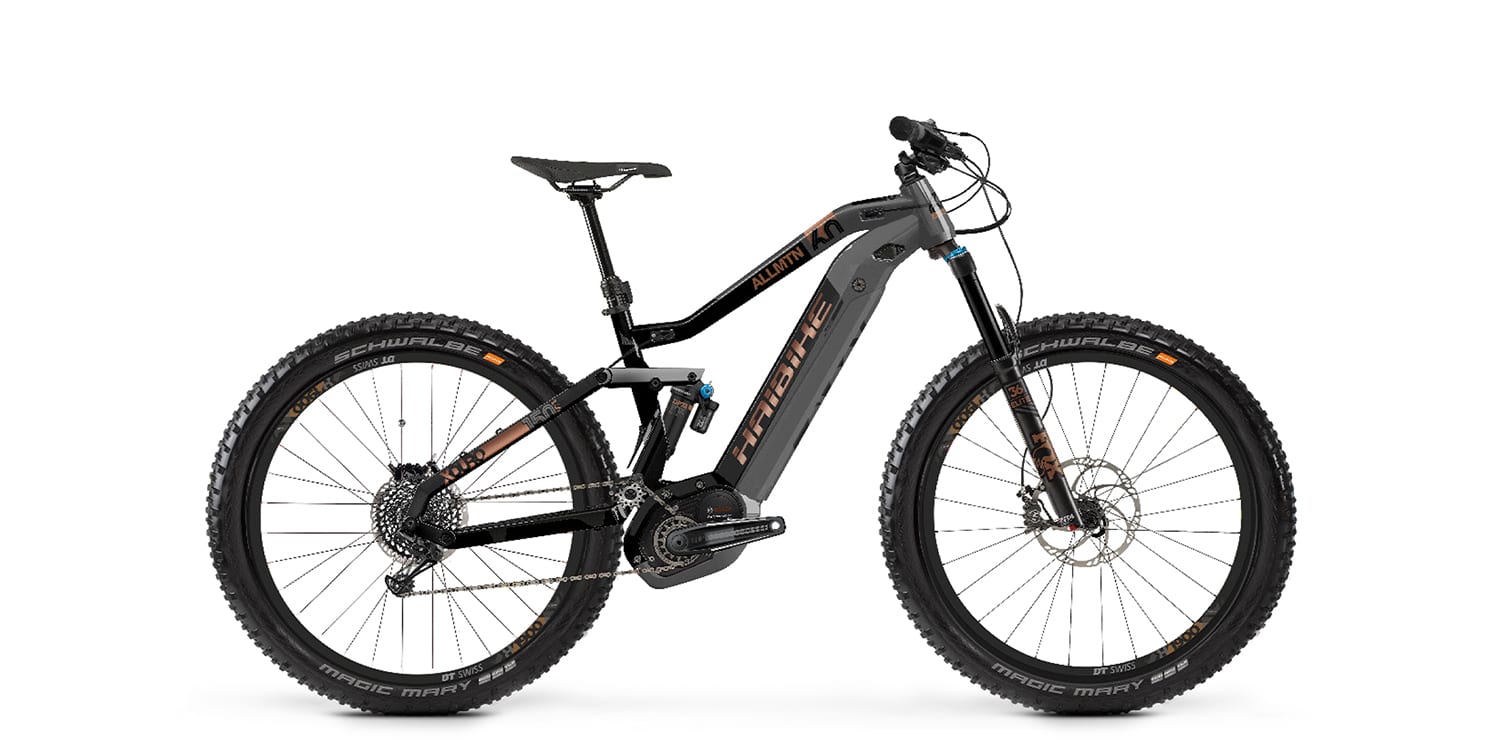
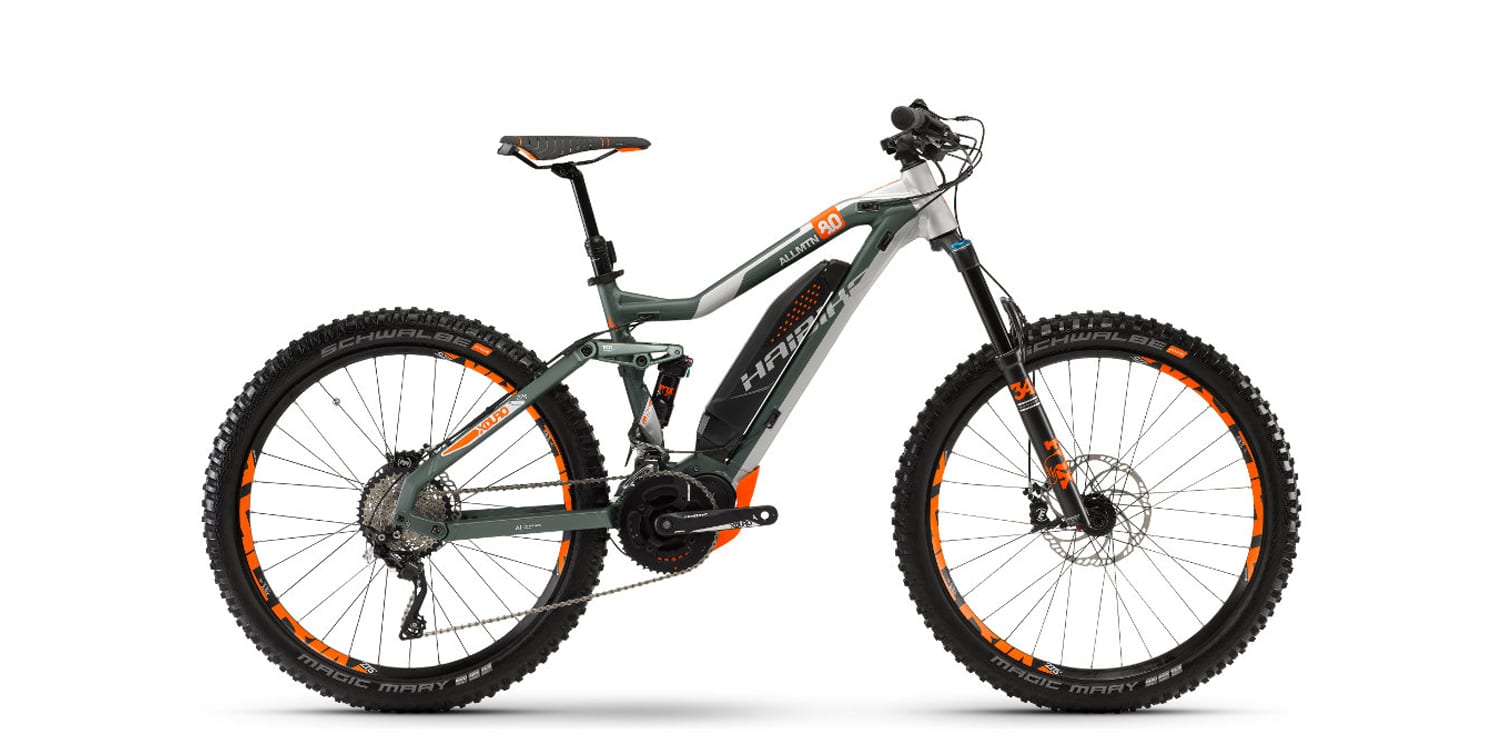
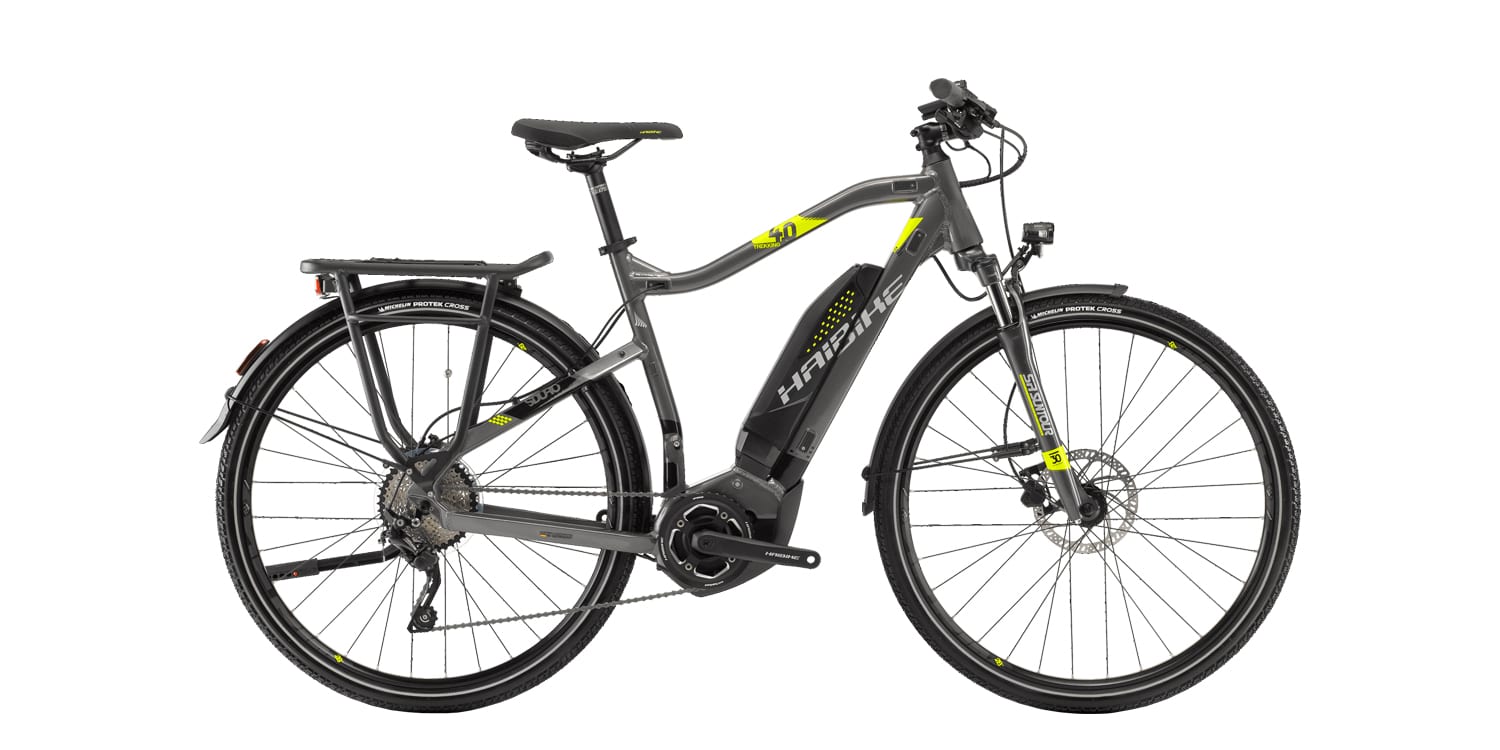
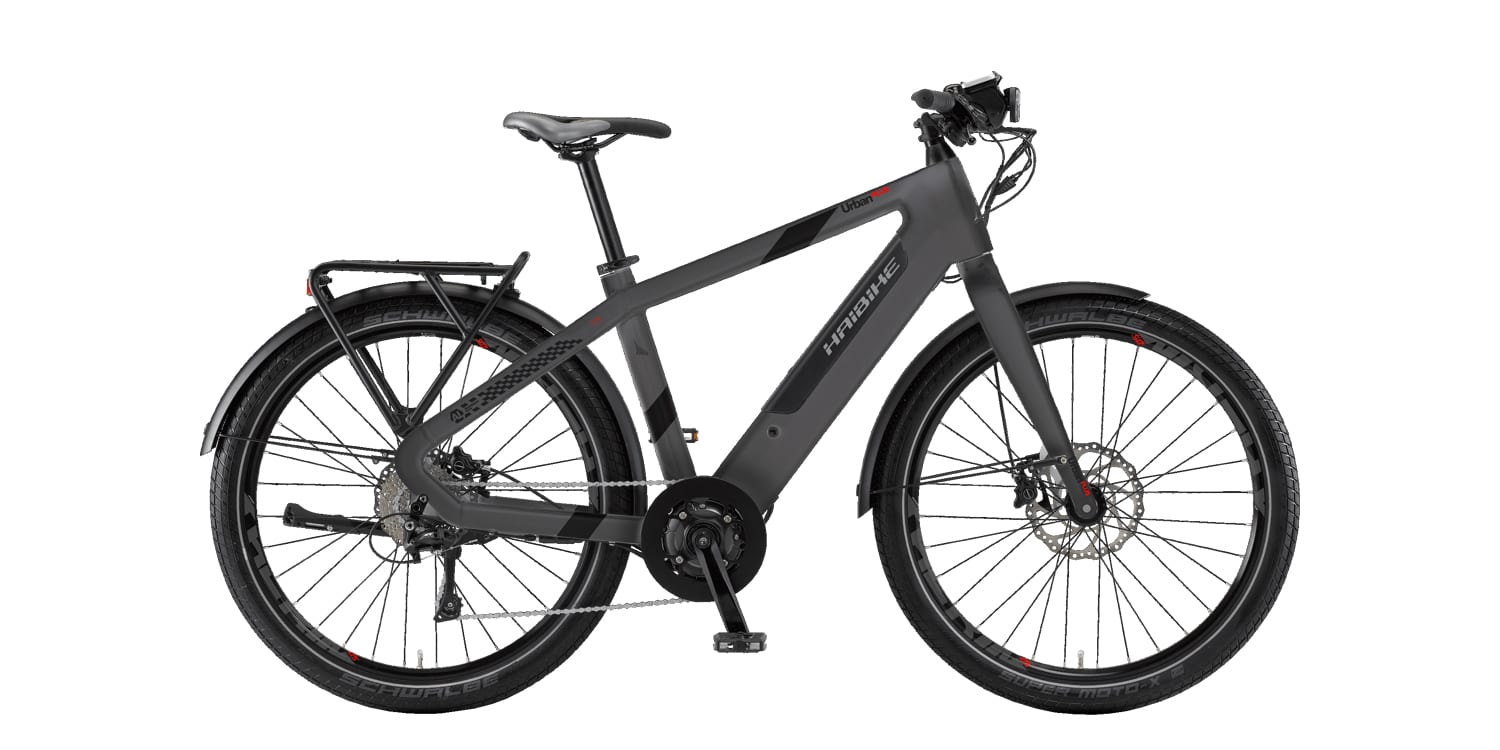
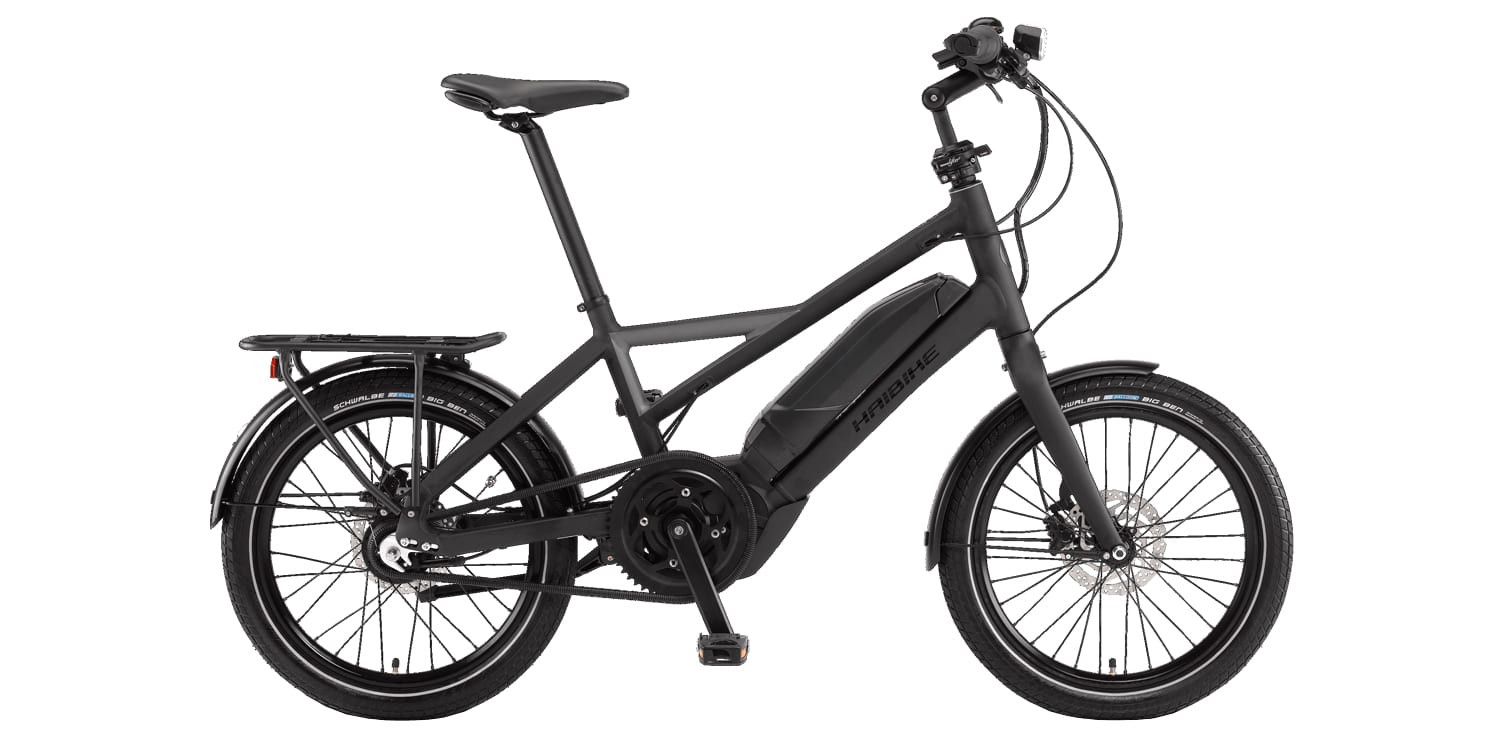
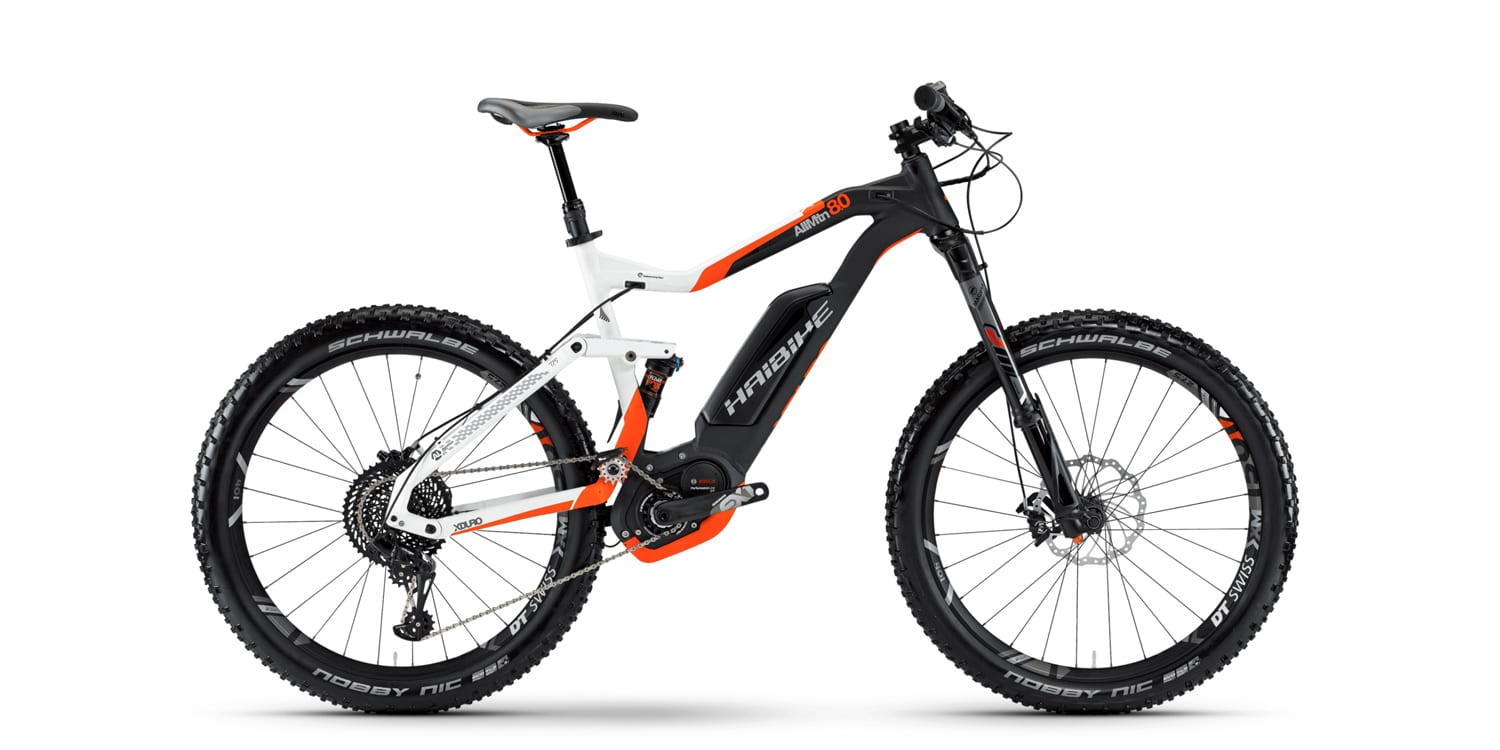
Tom Greene says
I would like to comment on what it is like to ride a bike like this from a road cyclist’s perspective. I recently bought the 2015 Haibike Urban Xduro, a similar design but it looks like the XDURO Urban S RX has upgraded components and wheels. That is a good thing.
First off, this is the most expensive bike I have bought (mine was about $3300 on close out) and many regular road bikes in the $1500 – 2000 range have considerably higher quality parts. The wheels are especially basic (including cheesy, easily bent rotors) on mine, and hopefully the Urban S RX has better ones.
I got the bike for high speed commuting, and it is OK for that. I have been doing a mix of bike and car commuting, 16 – 20 mi with several hundred feet of climbing each way on semi-rural to semi-urban roads on the SF Peninsula. This was taking about 60 minutes riding time or a bit more and I can shave about 12 min off each way on the Haibike. My heart rate monitor suggests that I ride at least as hard on the Haibike – my Strava suffer scores are often higher than commuting on my regular bike. I now commute by bike (mostly the Habike) more often.
The bike is adequate but I really had to work to get a decent fit and riding setup. You can really tell that Haibike isn’t a real bike company from the design and how the spec out their bikes. Court has rightly mentioned the lack of bottle mounts. Putting a triathlon-type seat mount on works, but this obscures the taillight. I ride a 52 cm road bike and got the 50 cm Haibike, but the stack height of my Urban (same frame used on many Haibikes) was much too high – about 56 cm I think, vs, about 52 cm on a road bike. The reach is a bit short too, so I had to get a 17deg 130 mm stem and flip it over to get negative rise. The other major beef is that they put 175 mm cranks on even their smallest bikes. That is criminal – cranks that long really mess up your hip angle and prevent you from getting low and aero. The bars have a tilt up that makes it awkward to keep your hands on the grips without rotting the bars back toward the sides, decreasing reach even further. I was able to get reasonable extension, weight balance, and posture by putting short mtn bike ends in the middle of the bars (just inside of the brake levers) and switching to 170 mm crank arms (only about $65 for the crank arms).
I think that the Bosch mid-drive is good for ‘real’ cyclists. Unlike Yamaha, it puts out high power at 100+ RPM, so it feels pretty natural. I like that it doesn’t put out power until you spin it a revolution or so; this allows doing track stands at red lights without the bike taking off. You really do want to get a Class 3 or higher speed pedelec. Mine came from my shop modified so it puts out power up to 40 mph, and I routinely cruise in the low 30s on my way to work. I would think that a 28 mph limit would be restrictive to people used to road racing and riding fast.
I have been commuting on it since September and look forward to continuing to do so for a few years. I hope that the cheesy parts last that long. After then, I’d like to replace it with one that fits and rides more like a real road bike. Lighter would be nice too. Mine is 41 pounds and is a real beast for working on and carrying up stairs.
Court Rye says
Hey Tom, thanks for writing such an extensive user-perspective on this bike… especially given your more advanced knowledge of road bikes. I agree with everything you wrote, the long crank arms on smaller frames was a good point and the whole bit about dialing in the bars and grips. I do my best to present bikes constructively and provide the data so people can figure out where to make adjustments. Bosch motors tend to hold up very well and I liked your point about being able to track stand at lights. Do you wear regular shoes or have you setup clipless? It was especially interesting to hear about the e-bike rides vs. regular in terms of heart rate and exercise, and the bits about Strava. Thanks!
Tom Greene says
You’re welcome Court, and thanks for doing such a great job of introducing us to and reviewing electric bikes over the years. I have relied on your reviews for info which has been very valuable in helping me pick an ebike that is best for my admittedly niche application (high speed commuting alternative to a road bike).
I am currently using clipless pedals on the Haibike, just Shimano SPDs with light mountain bike / commuting shoes. Hence my fondness for track stands. I’d like to add a few things to to my earlier comment:
Court Rye says
Good stuff Tom, Bosch has a new smaller display panel that you might enjoy called the Purion. I’ll cover it on some upcoming reviews. It’s neat to see you doing the math in each of the different assist levels, I do list that data but I’m not always sure people understand how it works. For a lighter weight bike, Eco can be great and it will definitely extend range. The only downside of that “connected” feeling you describe in my experience is the limited ability to bunny hop the bike and toss it around as with super light weight carbon non-electric bikes. I miss that race car feeling… like me as the engine and the feeling of flight switching to electric :)
Aaron says
Hi Court! I was wondering out of your preference, would you rather have this Haibike XDURO Urban S RX or a Stromer ST2 for an urban commute? Play favorites!
Court Rye says
Hi Aaron! I’d go for this one even though it might not be as comfortable or utilitarian as the ST2… If I needed it for commuting and lived where it rained a lot then maybe I’d reconsider but this bike is just so light and awesome looking! One of the big drawbacks to any Stromer is the heavy rear hub and I’m not a big heavy guy so lifting it and even maneuvering it doesn’t feel great. The Haibike XDURO Urban S RX is just so sexy XD
Bob Armani says
Hi Court- Awesome review and kudos to Sam for letting you use his ebikes for reviews. Do you know if an adjustable stem would work on this bike, and if so which one would fit, perhaps on Amazon?? This is certainly an awesome looking bike and would take this over the St2 any day just for the weight alone at 41lbs. Thanks for all your great work!
Court Rye says
Hi Bob, I do believe that you could replace the stock stem here with an adjustable design. I like the ones that Satori sells because they use multiple bolts vs. just one, so it won’t rattle loose as easily. I think you’d just want to go for a 31.8 mm clamp diameter and it should work, but I am no longer in front of the bike so cannot say for sure.